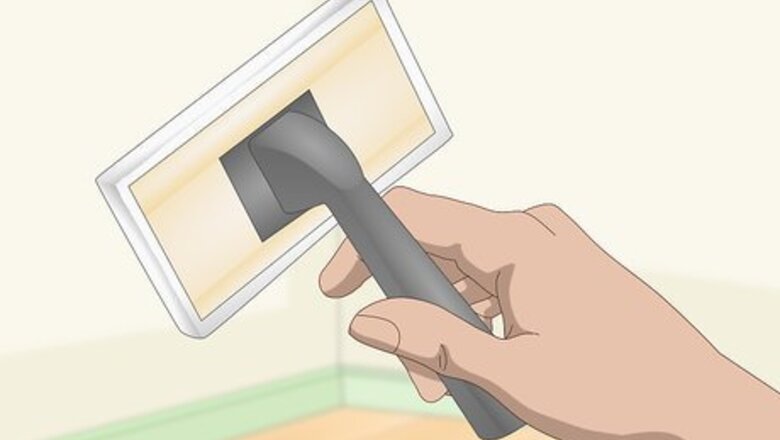
views
Gathering Supplies and Preparing the Room
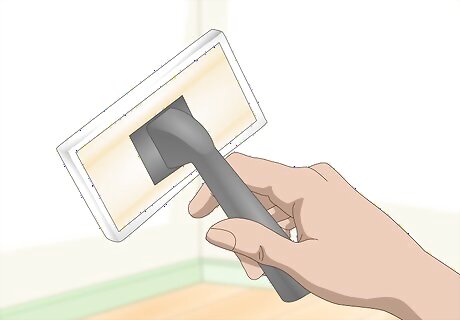
Purchase painting pads to paint your baseboards with. Using painting pads instead of brushes or rollers will give you a smoother coating of paint on the trim. Additionally, pads are usually the same width as common baseboards, so you can paint the width of the baseboard (from top to bottom) with one stroke. This will also minimize the amount of paint that drips off the trim as you paint. Visit a home-improvement store for a good selection of supplies. You can also purchase the necessary supplies to paint your baseboards at a painting store.

Purchase oil-based paint for your baseboards. Oil-based paint is far more durable and dries harder than other types of paint. It can be cleaned with light detergent without damaging the paint’s sheen. Oil-based paints also dry slower than latex or water-based paints, giving you more time to paint. Choose whatever color you like: some homeowners prefer white baseboards, while others like baseboards that match the walls. Find a large variety of oil-based paints at a nearby home-improvement store or hardware store.

Ventilate the room you’ll be painting baseboards in. Always paint in a well-ventilated room. Open all windows and doors in the room that you’re painting in so you’re not trapped in a room with paint fumes. If the room has no exterior windows or doors, use box fans to direct fresh air into the room. Various scented products (e.g., Lysol) can mask the smell of the paint, but the fumes are still present and can be harmful.
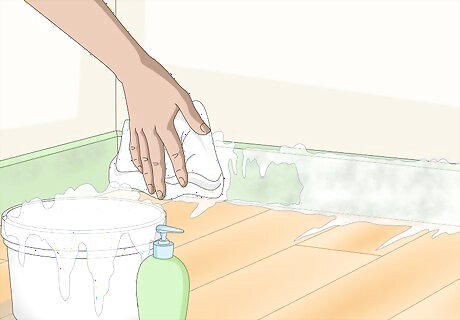
Clean off your baseboards to remove dirt and dust. Squeeze a small dollop of dish soap onto a clean cotton rag or washcloth. Dampen the cloth with warm tap water until the soap begins to foam. Then, run the cleaning cloth lightly along the surface of your baseboards to remove any grime, stains, or dirt. If your baseboards are already clean and don’t need to be scrubbed, just use the rag to dust the boards.

Mask the baseboards with painter’s tape. Run a strip of tape along the top of the baseboard where it meets the wall. Press the tape firmly into position so that it doesn’t slip while you’re painting. Apply masking tape to all of the baseboards you’ll paint before you start any painting. Masking the baseboards protects the walls from paint, so you can avoid getting paint on the walls while you are painting the baseboards. While you can mask with standard masking tape, be aware that it can pull the paint off of the walls when removed.
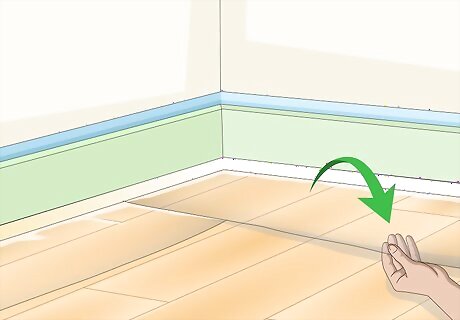
Lay a sheet of 4 mm (0.16 in) gauge plastic on the floor. This plastic will catch any drips of paint that happen to slide off of the freshly-painted baseboard and will prevent the paint from damaging your floor. Place the sheet of plastic against the bottom of the baseboard. Tape the plastic down with regular masking tape, right where the baseboard meets the floor. Purchase large sheets of thin plastic at a hardware store or home-improvement store. If you’d rather not buy enough plastic to cover the entire room, you can use 1 large piece and remove it, then re-tape it, for each new section of baseboard that you paint.
Painting the Baseboards

Pour ⁄4 gallon (0.9 L) of paint into a paint tray. This amount of paint should cover the bottom of the tray to a depth of about ⁄4 inch (1.9 cm). If your paint looks unevenly colored when you first open the can, use a 1 foot (0.30 m) long wooden painter’s stick to stir the paint. This will ensure that the paint has an even color when you apply it to your trim. Purchase a paint tray (either metal or plastic) at a home-supply store or a paint store.

Push the painting pad into the paint. Dip the pad deep enough so that just the sponge part of the pad is covered in paint. Scrape the excess paint off of the pad by running it over the edge of the tray. If you dip the painting pad too deep and cover the entire thing with paint, you’ll end up wasting paint when you paint the trim.

Run the painting pad along the baseboard. Hold the painting pad vertical so that its paint-covered face is directly against the baseboard. Slide the pad smoothly along the baseboard from left to right, making strokes that are each about 1 ft (0.30 m) long. Work with precision, since it's better to apply 2 or more thin layers of paint than 1 sloppy layer. Paint the top edge of the baseboard first, then paint the face. This will make sure that you don't damage the face of the baseboard while trying to paint the thinner edge. You should be able to paint about 4 feet (1.2 m) of baseboard with each dip in the paint.

Dip the pad back into the tray when it runs out of paint. You’ll notice right away when the painting pad has rubbed its last bit of paint onto the wall. To replenish the paint on the pad, dip it back into the paint tray and cover the sponge with paint, just as you did before. Once the paint is replenished, run the pad along the baseboard until the entire baseboard is painted. You’ll end up re-dipping the paint pad many times as you paint the baseboards.

Apply a second coat of paint if the first is translucent. This will be especially necessary if you’re applying light-colored paint over dark-colored trim. Apply the paint thinly, allow it to dry completely, and then apply another thin layer. Make sure that you overlap your strokes by about 1 inch (2.5 cm), and that each new section is blended together.
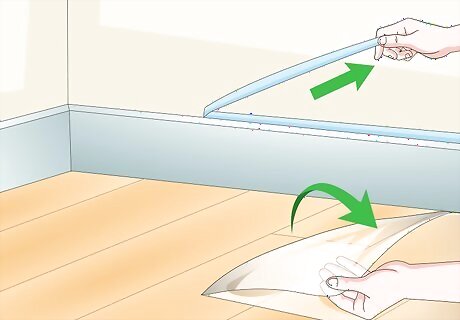
Pull off the painter’s tape and pick up the plastic after 2 hours. The 2-hour waiting period will give the paint plenty of time to dry partially but not completely. Start at 1 end of a long strip of painter’s tape and slowly peel until the full strip has been removed from the baseboards. Also pick up and dispose of the large sheet(s) of plastic that you used to protect the floor. If you pull off the painter’s tape after the paint has dried completely, some of the paint may have stuck to the tape. In this case, you’ll tear some of the paint off of the wall when you remove the tape.


















Comments
0 comment